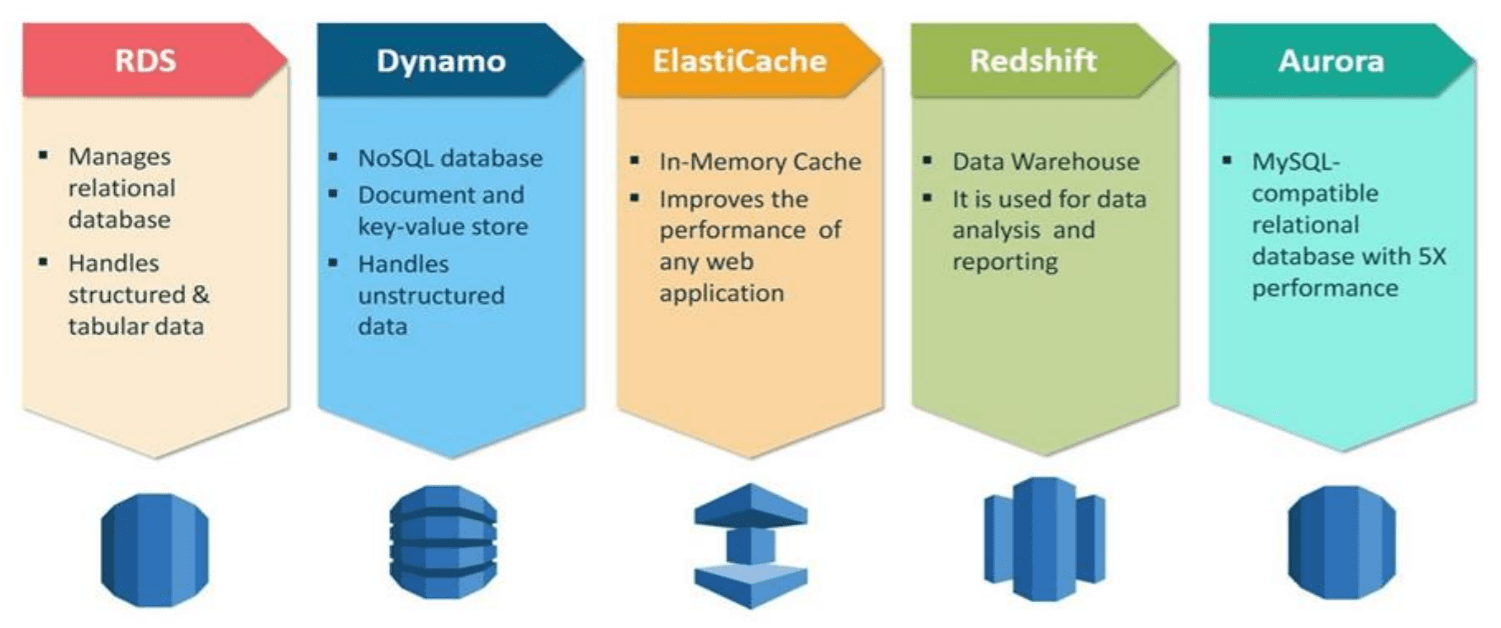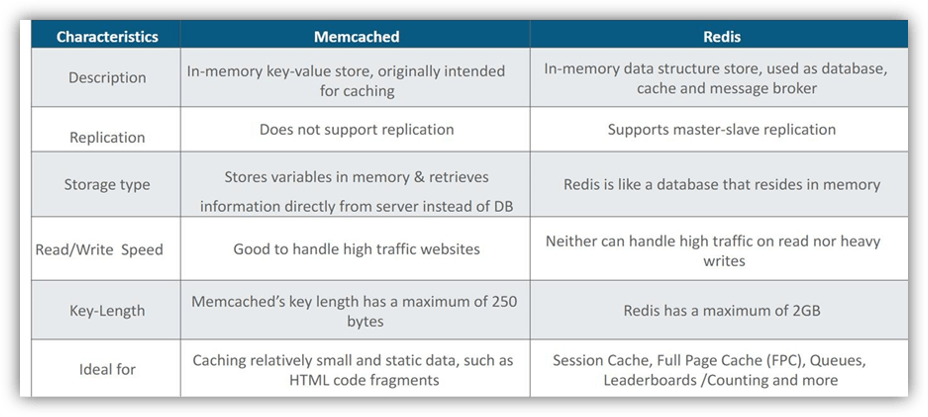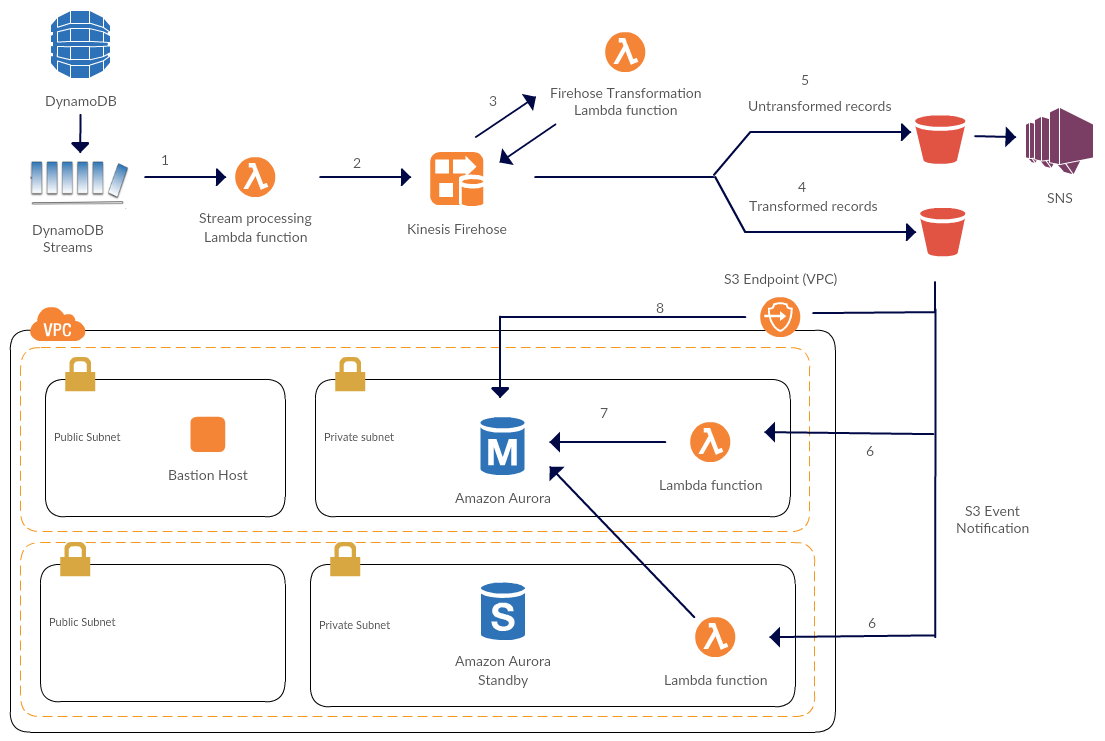Antwort Is DynamoDB an RDS? Weitere Antworten – Is DynamoDB part of RDS
The main difference between the two services is that Amazon RDS is designed for use with relational databases. In contrast, DynamoDB is intended for use with non-relational databases. RDS is more expensive than DynamoDB but offers more features and flexibility.Answer. No, DynamoDB is a non-relational database.DynamoDB requires virtually no maintenance. Managed relational database require minimal maintenance and the automatic patching and update offered by Aurora/RDS makes it even more so. Dynamo offers five nine of monthly uptime (99.999) versus the four nine of Aurora (99.99).
Is DynamoDB a MySQL database : DynamoDB is a NoSQL database that uses a key-value store and document data model.
Why DynamoDB is better than RDS
With DynamoDB, AWS will take care of all the “behind-the-scenes” management to ensure your key-value pair database runs smoothly and without a lot of overhead. It is a great solution for unstructured data as opposed to RDS which is meant for well-structured data but we'll get into all of that below.
What is the difference between RDS table and DynamoDB table : Amazon RDS will automatically replace the compute instance powering your deployment in the event of a hardware failure. DynamoDB global tables replicate your data automatically across 3 Availability Zones of your choice of AWS Regions and automatically scale capacity to accommodate your workloads.
NoSQL
Amazon DynamoDB is a serverless, NoSQL, fully managed database service with single-digit millisecond response times at any scale, enabling you to develop and run modern applications while only paying for what you use.
NoSQL database
Amazon DynamoDB is a NoSQL database used to run high-performance applications at any scale.
How to choose between RDS and DynamoDB
Data Structure and Complexity:
- RDS: Ideal for structured and complex relational data where predefined schemas and SQL queries are essential.
- DynamoDB: Suited for flexible and dynamic data structures, especially in NoSQL databases, accommodating evolving and varied data formats.
Amazon RDS can also be used for large databases, but it can only scale horizontally. Amazon RDS is a good choice for cost-sensitive applications. It is less expensive than Amazon Aurora. Amazon Aurora is more expensive than Amazon RDS, but it offers better performance, durability, and scalability.NoSQL
Amazon DynamoDB is a serverless, NoSQL, fully managed database service with single-digit millisecond response times at any scale, enabling you to develop and run modern applications while only paying for what you use. The diagram shows the core features of Amazon DynamoDB and integrations with other AWS services.
DynamoDB vs Amazon RDS – Key Takeaways
If you have structured data that requires ACID transactions and support for SQL queries, Amazon RDS may be a better fit. However, if you have large amounts of unstructured or semi-structured data with high scalability and throughput needs, DynamoDB may be a better fit.
How does DynamoDB differ from a relational database : Relational (SQL) vs Non-Relational (NoSQL) In short, relational databases use predefined schema and store data in rows and columns like a spreadsheet, whereas non-relational databases such as DynamoDB have dynamic schema, are document-oriented, and scale horizontally.
What is the difference between Amazon RDS Redshift and DynamoDB : Similar, Redshift data warehouse instances are also organized in clusters for very large data analytics such as Business Intelligence at moderate costs. In contrast, DynamoDB is a highly flexible and scalable serverless NoSQL database for modern serverless apps with multi-media.
Is Amazon RDS a NoSQL database
Amazon Relational Database Service (RDS) is a managed SQL database service that automates all the time-consuming administration tasks such as provisioning, setup, patching, and backups.
Relational (SQL) vs Non-Relational (NoSQL) In short, relational databases use predefined schema and store data in rows and columns like a spreadsheet, whereas non-relational databases such as DynamoDB have dynamic schema, are document-oriented, and scale horizontally.Amazon Relational Database Service (RDS) is a managed SQL database service that automates all the time-consuming administration tasks such as provisioning, setup, patching, and backups.
Why Aurora instead of RDS : Amazon Aurora's separate compute and storage architecture, along with support for on-demand scaling (serverless feature), enables Aurora to be faster, more durable, and quicker to recover from failure than standard Amazon RDS.





